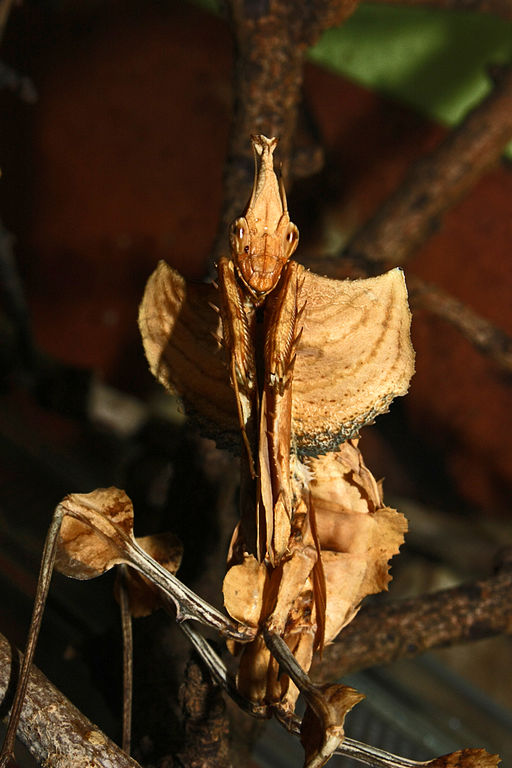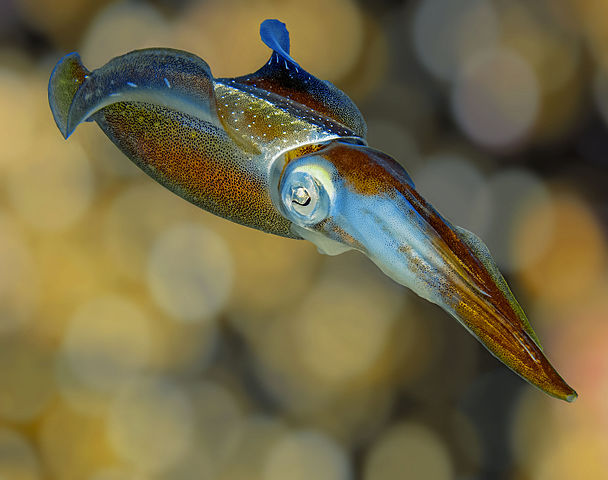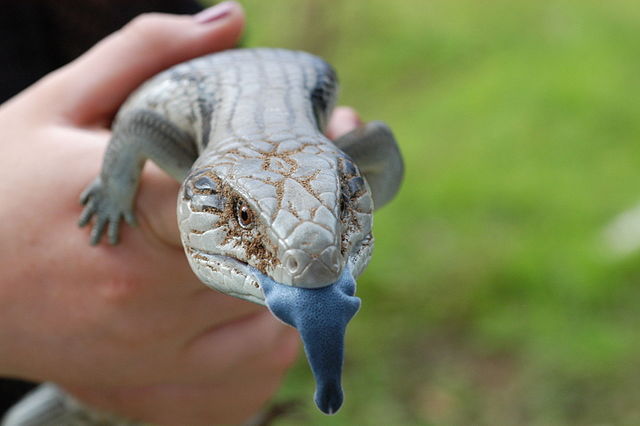Deimatic Displays - Startling Signals
In ethology, threatening or starting behavior is called deimatic behavior. The term was coined by Malcolm Edmunds, emeritus professor of zoology at the University of Central Lancashire, England.
It is similar to aposematism, and scientists often disagree on what makes one signal deimatic and what makes another one aposematic. Some say certain signals can be both deimatic and aposematic. The true difference is that while deimatic behavior is meant to startle, aposematic displays are meant to warn the receiver, and while the former does not result in negative reinforcement, the latter does - the predator learns to avoid aposematic prey. The former is a bluff, the latter is a genuine signal of the prey's toxicity or other ability to defent itself.
Deimatic behavior can be understood as a rather dynamic response. Usually the prey is defenseless - it's minding its own business in an unconspicuous state. Performing a rapid, dynamic startling display is its only chance to confuse the predator and earn precious time to flee.
Some argue that deimatic behavior may only occur before the attack, while others have proven that in some animals, such as katydids, deimatic behavior may, in fact, happen after an attack, which stops the predator from continuing the attack.
No matter how we define 'true' deimatic displays, we should just see what one looks like.
Examples:
Idolomantis diabolica, the devil's flower mantis, is a large species of
praying mantis, and perhaps the largest one that mimics flowers.
When startled, it will stand tall to expose the patters on the underside of its thorax and abdomen, and raise its front legs to appear bigger. It will spread its wings to reveal their bright coloration and move from side to side to confuse the predator. This behavior is very typical for many other mantids (1, 2, 3), but this species makes it look extra compelling thanks to its devilish appearance.
We know about plenty of other animals that make deimatic displays: frogs, such as some Leptodactylid species of the genus Pleuroderma or Physalaemus, individuals of which have false eyes on their rear ends; butterflies, e.g. the European swallowtail (Papilio machaon); squids, e.g. the Carribean reef squid (Sepioteuthis sepioidea), or even reptiles - and things get super interesting here!
From our Awesome Insects Dept—Devil’s Flower Mantis. Females get to 5 inches long. Mimic orchid to lure prey. pic.twitter.com/CbqwbnLzuO
— Neil Shubin (@NeilShubin) May 4, 2016
Bluetongue skinks (genus Tiliqua) are known for showing their blue tongues in defensive displays. A 2018 article published in Behavioral Ecology and Sociobiology explores the deimatic behavior in northern bluetongue skinks (Tiliqua scincoides intermedia).
The authors of the study found that the skink makes a 'full-tongue display' (i.e. it reveals the entire tongue) only during the final stage of predation, that is, in the moment when it feels it's in the greatest danger. The skink combines the display with hissing, rapid body movement and body inflation to make it even more startling. The reason for such timing, according to the authors, could be to "overwhelm the sensory system of the receiver" - it's a shock! If it decides to activate this behavior at an earlier stage, the skink could make itself more conspicuous to a predator that would have possibly ignored it, had it not acted.
The video shows a blotched bluetongue skink (Tiliqua nigrolutea).
This species apparently also combines the 'full-tongue' display with hissing, body inflation and rapid movements.
The video also shows that the skink does not understand Australian English.
The signal could be especially effective on birds and reptiles for a reason we would never
understand without technology - the tongue is UV-blue! What's more, the deeper part of the
tongue (the part that's only visible during the 'full-tongue display') is nearly twice as
luminous as the tip! The authors, however, aren't convinced that the UV coloration of the tongue
has anything to do with making the display more startling, but that it is merely a by-product of
the skink's tongue histology. To know for sure, we need to study predator responses to this behavior.
The skink's behavior could be seen as aposematic if the reptile also attacked the predator, making the 'full-tongue display' a signal that means "don't continue because you'll get hurt!" During the study, however, the animals did not attack, so the authors concluded that the behavior agreed with the 'dematic behavior theory'. The signal is meant to startle, not to warn.

Photo credit: Drägüs
| Common name: | Devil's flower mantis |
| Scientific name: | Idolomantis diabolica |
| Phylum: | Arthropoda |
| Class: | Insecta |
| Order: | Mantodea |
| Family: | Empusidae |
| Scientific reading: |

Photo credit: Felipe Gomes
False eyes on the backside of the frog.
| Common name: | Cuyaba dwarf frog |
| Scientific name: | Physalaemus nattereri |
| Phylum: | Chordata |
| Class: | Amphibia |
| Order: | Anura |
| Family: | Leptodactylidae |
| IUCN status: | Least concern |
| Population trend: | Decreasing |
| Scientific reading: |

Photo credit: Entomolon
| Common name: | Old world swallowtail |
| Scientific name: | Papilio machaon |
| Phylum: | Arthropoda |
| Class: | Insecta |
| Order: | Lepidoptera |
| Family: | Papilionidae |
| Scientific reading: |

Photo credit: Betty Wills
| Common name: | Carribean reef squid |
| Scientific name: | Sepioteuthis sepioidea |
| Phylum: | Mollusca |
| Class: | Cephalopoda |
| Order: | Myopsida |
| Family: | Loliginidae |
| IUCN status: | Least concern |
| Population trend: | Unknown |
| Scientific reading: |

Photo credit: Doug Beckers
| Common name: | Common bluetongue |
| Scientific name: | Tiliqua scincoides |
| Phylum: | Chordata |
| Class: | Reptilia |
| Order: | Squamata |
| Family: | Scincidae |
| IUCN status: | Least concern |
| Population trend: | Stable |
| Scientific reading: |